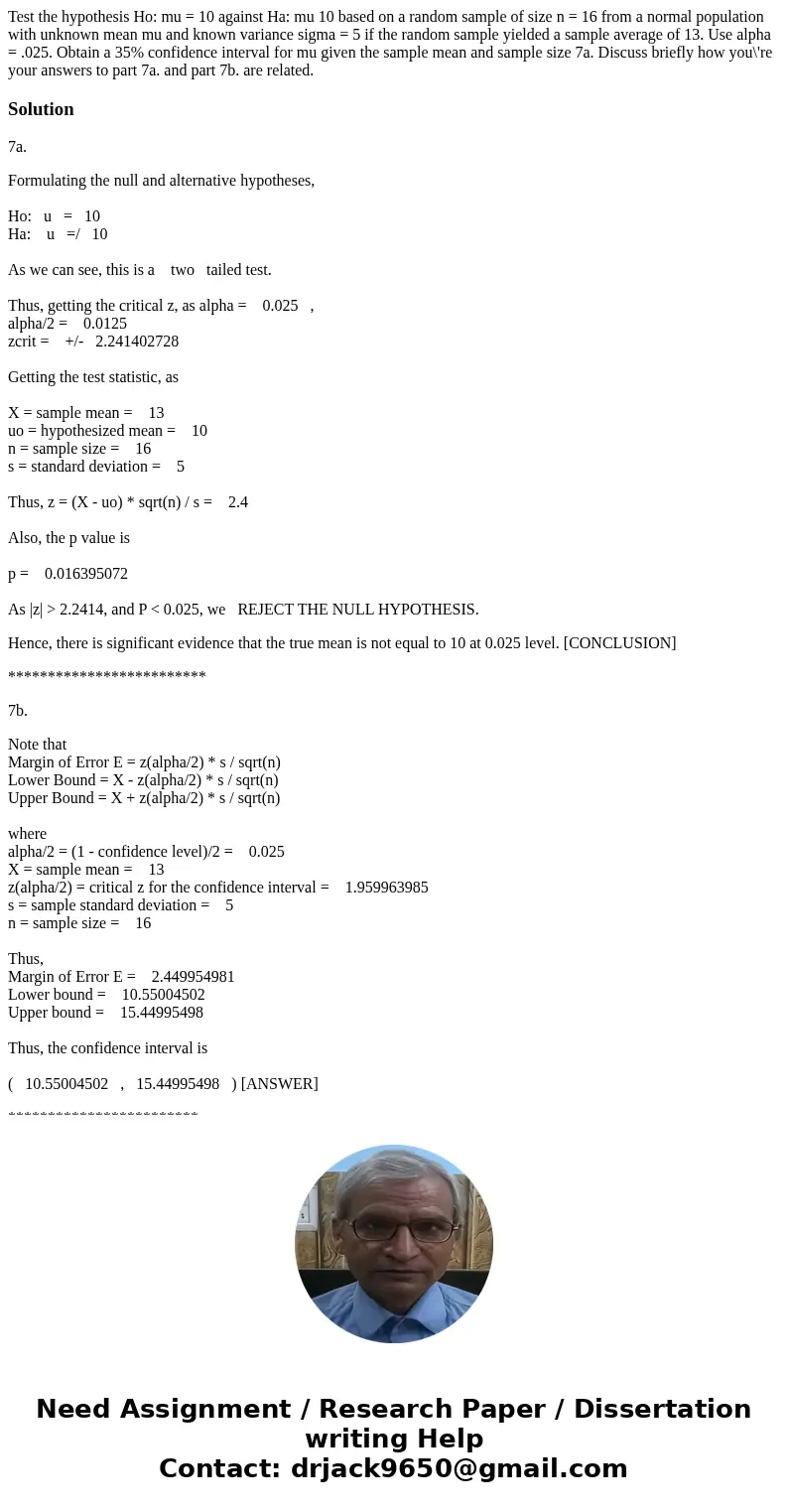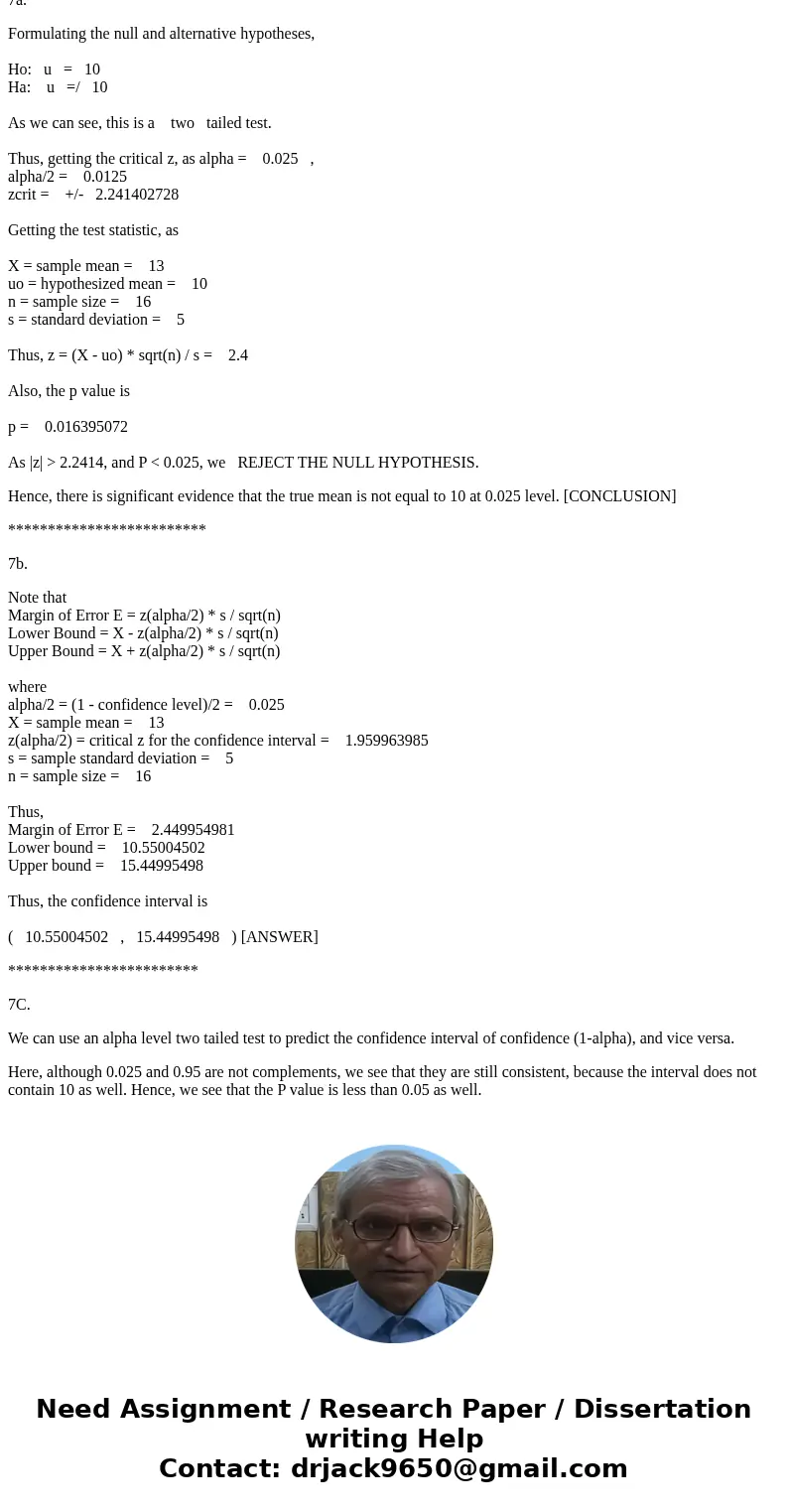Test the hypothesis Ho mu 10 against Ha mu 10 based on a ra
Solution
7a.
Formulating the null and alternative hypotheses,
Ho: u = 10
Ha: u =/ 10
As we can see, this is a two tailed test.
Thus, getting the critical z, as alpha = 0.025 ,
alpha/2 = 0.0125
zcrit = +/- 2.241402728
Getting the test statistic, as
X = sample mean = 13
uo = hypothesized mean = 10
n = sample size = 16
s = standard deviation = 5
Thus, z = (X - uo) * sqrt(n) / s = 2.4
Also, the p value is
p = 0.016395072
As |z| > 2.2414, and P < 0.025, we REJECT THE NULL HYPOTHESIS.
Hence, there is significant evidence that the true mean is not equal to 10 at 0.025 level. [CONCLUSION]
*************************
7b.
Note that
Margin of Error E = z(alpha/2) * s / sqrt(n)
Lower Bound = X - z(alpha/2) * s / sqrt(n)
Upper Bound = X + z(alpha/2) * s / sqrt(n)
where
alpha/2 = (1 - confidence level)/2 = 0.025
X = sample mean = 13
z(alpha/2) = critical z for the confidence interval = 1.959963985
s = sample standard deviation = 5
n = sample size = 16
Thus,
Margin of Error E = 2.449954981
Lower bound = 10.55004502
Upper bound = 15.44995498
Thus, the confidence interval is
( 10.55004502 , 15.44995498 ) [ANSWER]
************************
7C.
We can use an alpha level two tailed test to predict the confidence interval of confidence (1-alpha), and vice versa.
Here, although 0.025 and 0.95 are not complements, we see that they are still consistent, because the interval does not contain 10 as well. Hence, we see that the P value is less than 0.05 as well.


 Homework Sourse
Homework Sourse